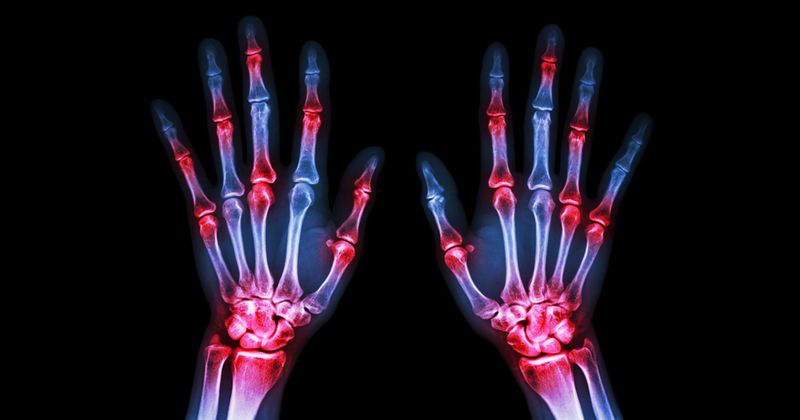Radiographic scoring system 'feasible, reproducible' to assess spur, sclerosis in gout
A semi-quantitative plain radiographic scoring method for assessing new bone formation in sclerosis and spur in gout is feasible, valid and reproducible, according to data published in Arthritis Research & Therapy.
“Features of new bone formation such as sclerosis and spurs are common on plain radiography in tophaceous gout,” Chang-Nam Son, MD, of Keimyung University School of Medicine, in Daegu, South Korea, and colleagues wrote. “While a plain radiographic damage scoring system incorporating bone erosion and joint space narrowing has been developed, there are no published methods for scoring new bone formation in gout.”

They added: “Although there have been some reports of reparative processes with increased new bone formation in response to intensive urate-lowering therapy, it is not possible to systematically quantify these changes at present, due to the lack of a validated scoring method.”
To develop a plain radiographic scoring method for new bone formation in gout, Son and colleagues tested 80 individual first and fifth metatarsophalangeal joints. These tests were informed by a literature review that resulted in 840 records reporting on 86 unique scoring systems for new bone formation. The researchers compared plain radiography scores with computed tomography (CT) measurements of the same joints, from scans obtained for research approved by the New Zealand Ministry of Health.
Son and colleagues then tested the best performing scoring system in paired sets of hand and foot radiographs collected over a 2-year period from an additional 25 patients. The researchers assessed inter-reader reproducibility using intraclass correlation coefficients (ICC). New bone formation scores were correlated with those of plain radiographic erosion, using the gout-modified Sharp-van der Heijde system.
The researchers ultimately developed a semi-quantitative scoring system for sclerosis and spur, following a series of structured reviews of plain radiographs and scoring exercises. The scoring rules for both sclerosis and spurs, according to the method, are:
The proximal and distal bones are scored separately for interphalangeal joints, metacarpophalangeal joints and metatarsophalangeal joints, with a maximum score of 6 for an individual joint;
Single bones are scored for the carpal and tarsal articulations, with a maximum score of 3 for an individual bone;
For long bones, score the 1-cm distance from the articular surface; and
For sclerosis only, if the bone is eroded, score the available bone as the denominator.
According to Son and colleagues, the inter-observer ICC in the individual joint analysis was 0.84 (95% CI, 0.76-0.89) for sclerosis and 0.81 (95% CI, 0.72-0.87) for spur. In addition, plain radiographic sclerosis and spur scores correlated with CT measurements (r = 0.65-0.74; P < .001).
Regarding the hand and foot radiograph sets, the inter-observer ICC was 0.94 (95% CI, 0.9-0.98) for sclerosis score and 0.76 (95% CI, 0.65-0.84) for spur score. Sclerosis (r = 0.87) and spur scores (r = 0.71) correlated highly with plain radiographic erosion scores, but not with change in erosion scores over 2 years (r = –0.04 to 0.15), the researchers wrote.
“This project has identified a feasible and reproducible method for scoring new bone formation features of sclerosis and spur in gout,” Son and colleagues wrote. “This method correlates well with reference standard CT measurement and has good inter-reader reproducibility. This scoring system may facilitate research examining the mechanisms, impact, and treatment of structural bone lesions in gout, beyond bone erosion, which, with a few exceptions, has been the major focus of research to date.”
“A semi-quantitative plain radiographic scoring method for the assessment of bone sclerosis and spur in gout is feasible, valid, and reproducible,” they added. “This method may facilitate consistent measurement of new bone formation in gout.”
